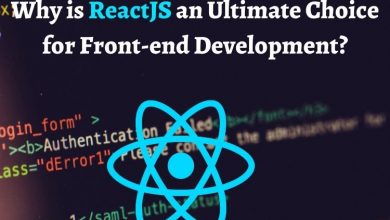Virtual Reality – A Design Tool for AEC

Design is an important component of architecture, engineering, and construction (AEC), and the tools used by these industries are evolving.
With digitalization continuing to spread into a variety of industries, the AEC sector is adopting more innovative strategies for modelling and delivering designs, including virtual reality (VR).
From VR, you will learn about the application of this technology in architecture, industrial engineering, and building industries.
What are the Benefits of Using Virtual Reality in Architecture?
Traditionally, architects have been trained to inspect designs before interpreting how a building might look and feel. While they are taught to do this, however, their clients are frequently not. This results in a knowledge gap where the client must make an interpretive leap from the design concept to what the final version will look like.
The gap between virtual reality and the real world has been closing rapidly. Architects may now use VR to build immersive 3D visualisation representations that they can walk their clients through. This makes designs come alive in stunning detail, allowing for considerably more effective communication among architects, stakeholders, consumers, and end-users.
Metaverse agency can experience designs in a 360° format, including realistic representations of building materials. VR technology may be used to enhance this immersive quality even more and into new collaborative working methods.
Architects may now share group visualizations in real-time using Group VR. Architects and other professionals in the built environment can interact with these models by combining building information modelling (BIM) into large-scale 3D displays.
Architects may test their designs by putting them into difficult areas and obtaining immediate feedback on how they feel and function, as well as whether the final, physical forms will achieve the project’s goals. VR is now a useful tool for architects, but it is quickly evolving.
The Influence of Virtual Reality in Industrial Design and Engineering
Engineers are always on the lookout for new and better ways to design and execute projects.
ST Engineering Antycip’s Virtual reality (VR) is set to drive further innovation in industrial design and engineering, which has been aided by computer-aided design (CAD).
CAD has supported this forward-looking approach, but now VR is poised to take it a step farther. Engineering used to be a tactile profession that necessitated much more physical labour than it does today.
What VR provides is the opportunity to experience something physical in a simulated environment.
CAD tools, when incorporated into the design process, will eventually enable engineers to start creating entirely in 3D. This isn’t a pipe dream for the future; the technology is there to make it happen. Engineers will be able to see their prototypes more clearly with VR implementation. They’ll even be able to stroll through them and see what works well or needs improvement.
Engineers can now create virtual experiences of their designs, which they may interact with in real-time. VR has the potential to revolutionize design and evaluation processes. It may assist engineers in reducing the cost of physical prototyping and improving how engineers execute the internal design and engineering reviews.
Engineers may use VR as a design tool to make crucial decisions much sooner in the overall process, allowing them to manage expenses and keep projects on track.
Construction and the Impact of Virtual Reality
Construction may be perceived as sluggish to adapt, yet it is, and virtual reality is playing a role in this transformation. Before the foundations are laid, it can allow construction experts to check the specifics of structures in real-time, as though they were standing in front of them, to actual scale.
As with architecture, one of the most significant problems in construction is to envision the completed structure in advance of completion. While 3D modelling software can generate 3D models, they don’t offer immersive experiences as VR does. It will be a game-changer for construction experts, developers, stakeholders, and customers alike.
ST Engineering Antycip’s VR can facilitate the explanation and demonstration of ideas, making it much easier. It might help discover potential problem areas before they arise on-site. The advantages are improved cost efficiency and a greater capacity to meet clients’ demands. VR may boost cooperation and communication elimination in the workplace. However, in the future, it will also be a collaborative tool.
Conclusion
In the AEC sector, the rate at which firms embrace technological progress varies from industry to industry. However, amid a backdrop of significant technological advancements such as 5G and the fourth industrial revolution, VR is gaining steam as a technology with enormous potential to propel future AEC development. Much of this equipment is now ready for practical application.
VR technology is poised to have a major impact on the construction sector, and companies are already exploring different ways to utilize it. To better prepare for the new reality of virtuality, several organizations, supported by ST Engineering Antycip, throughout the world have invested in VR training for their workers.





